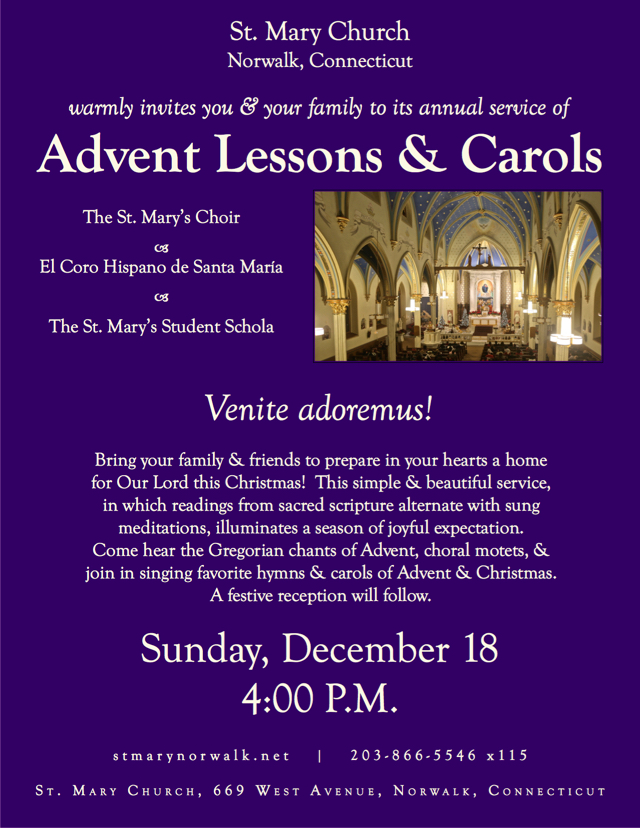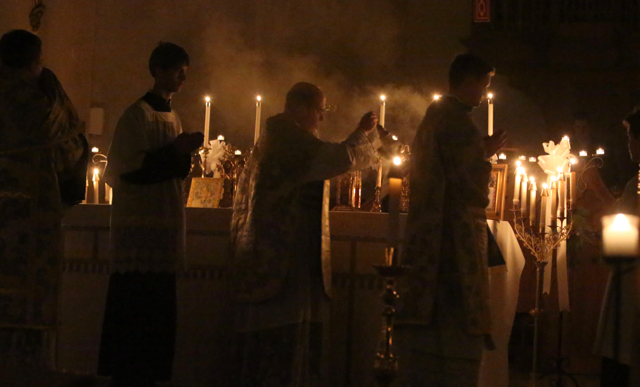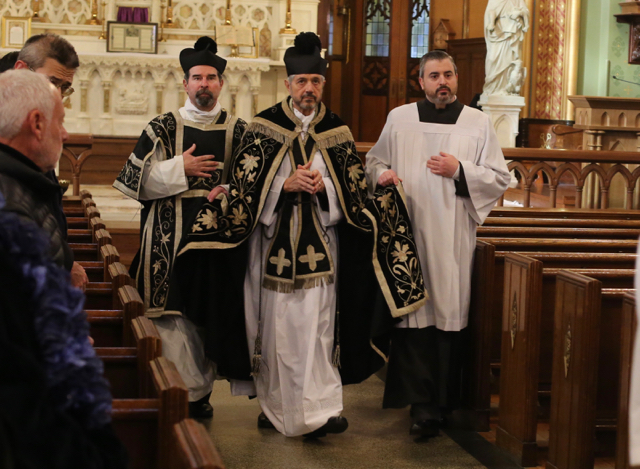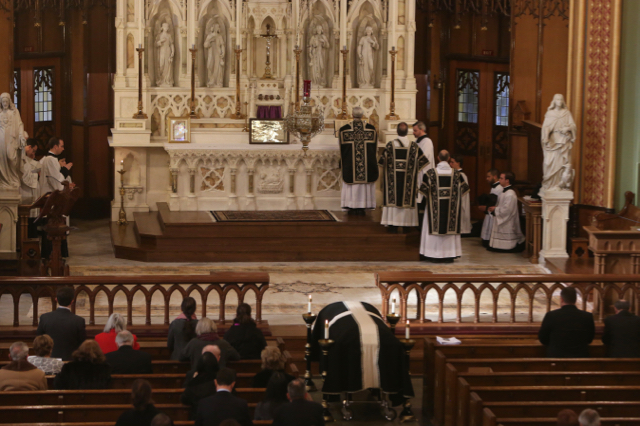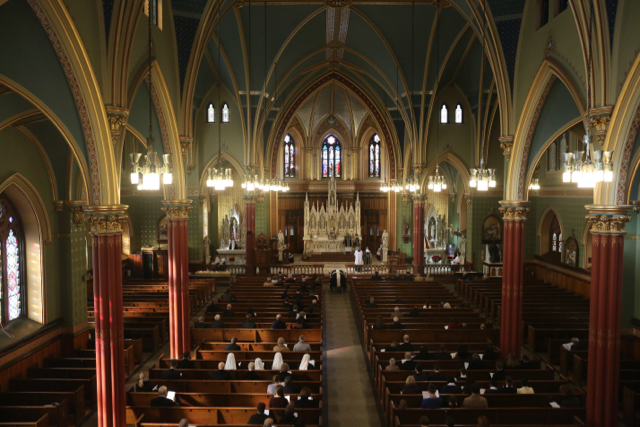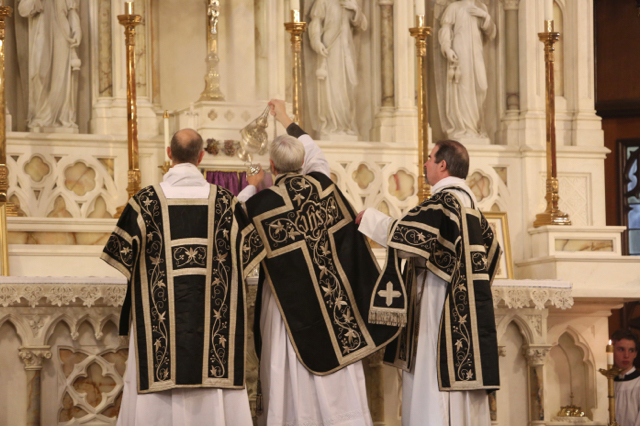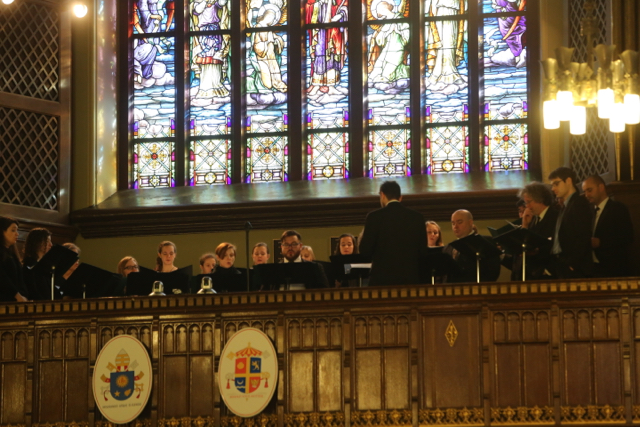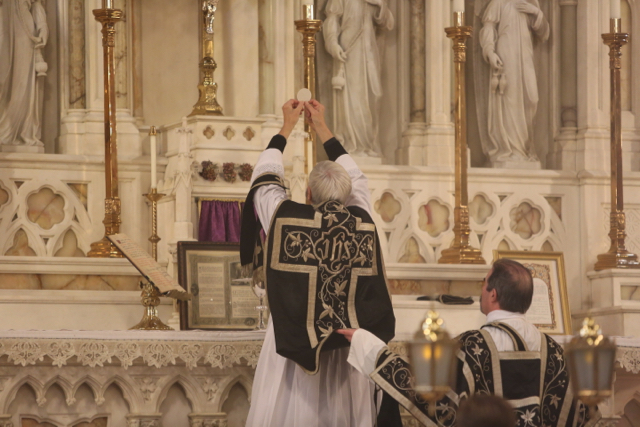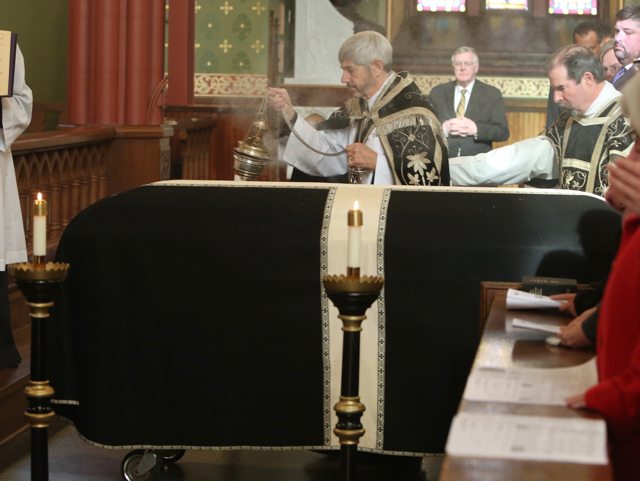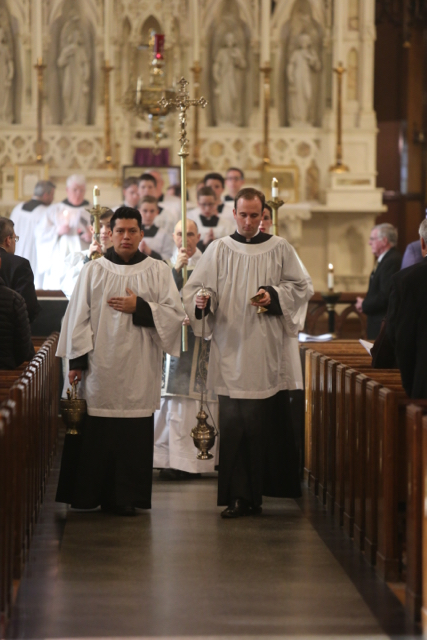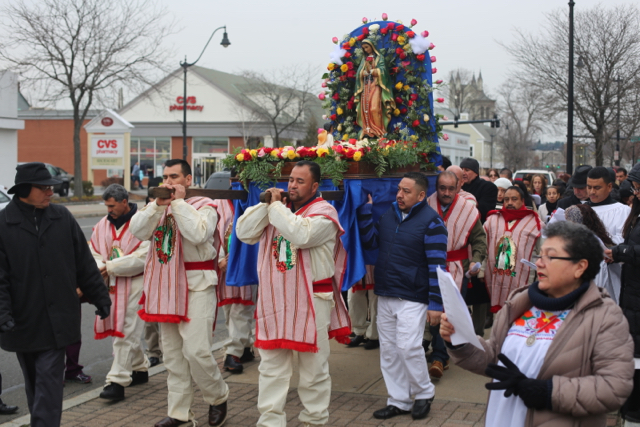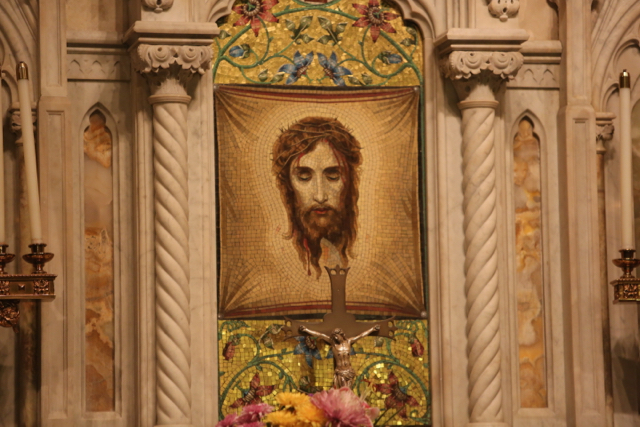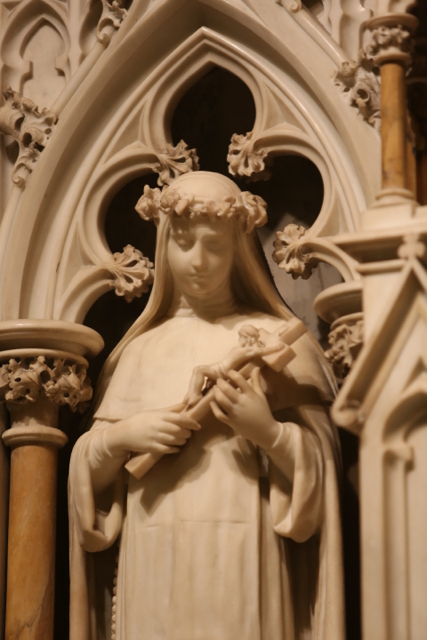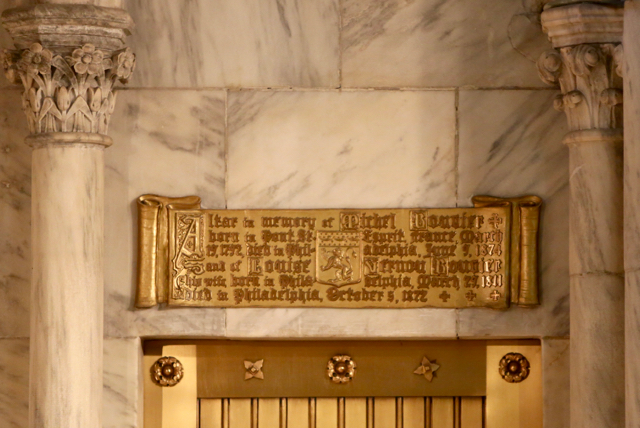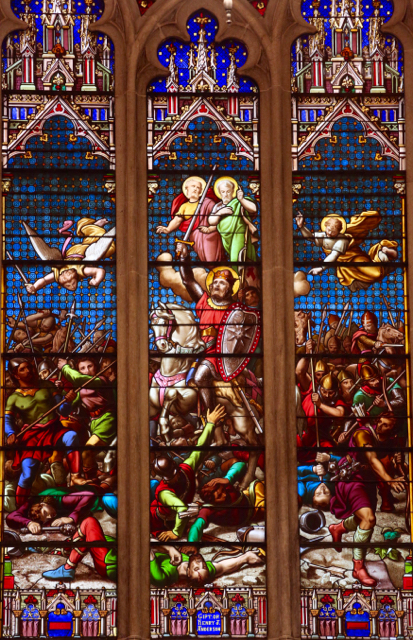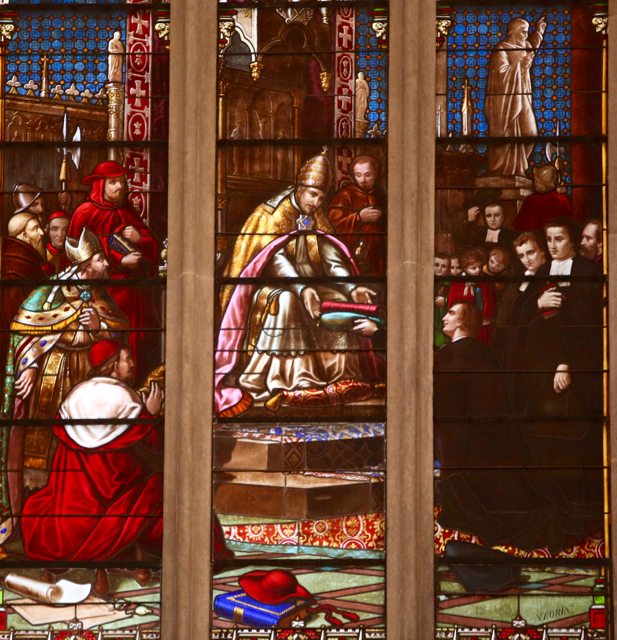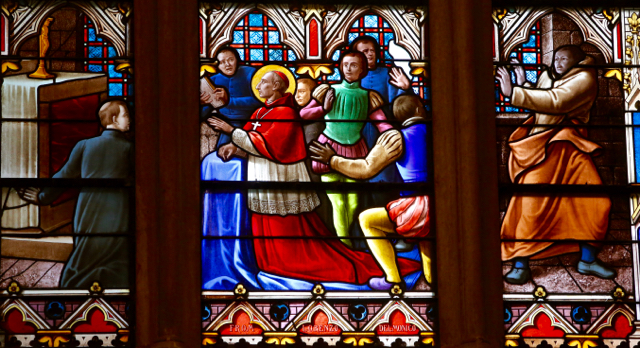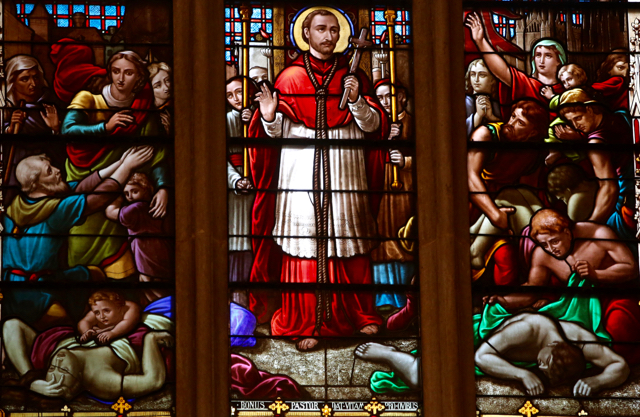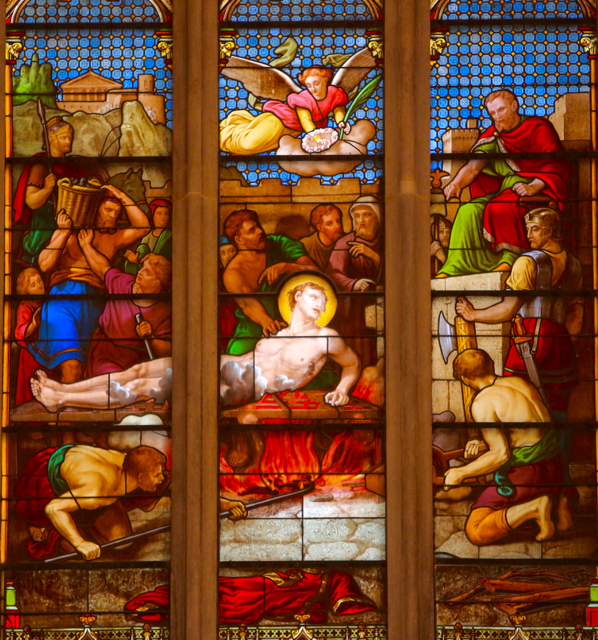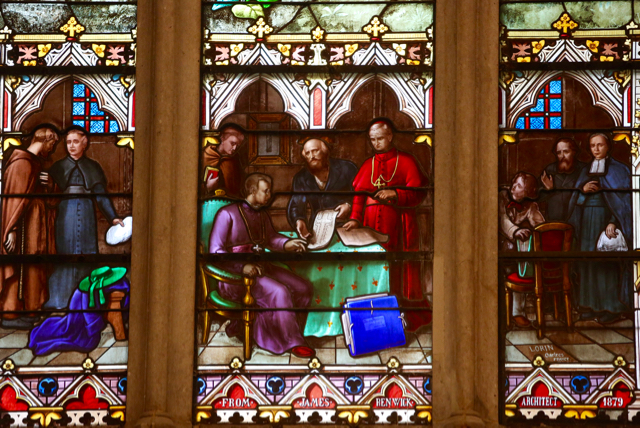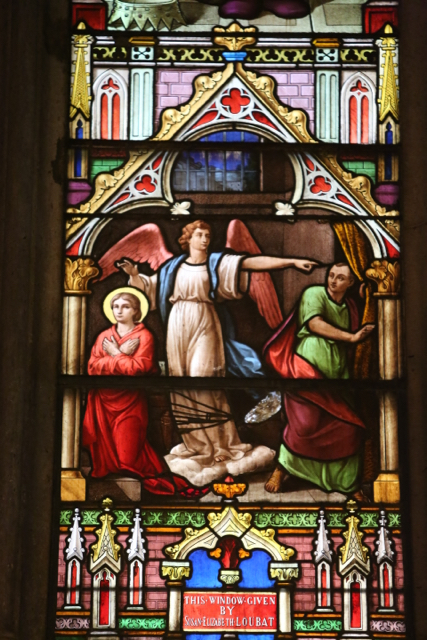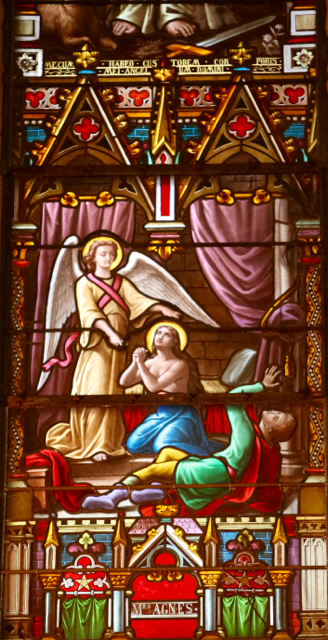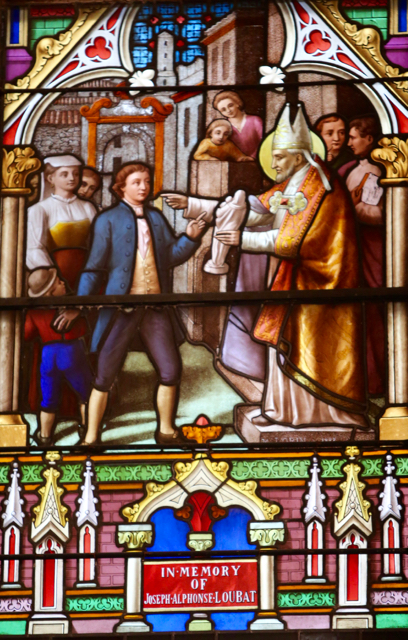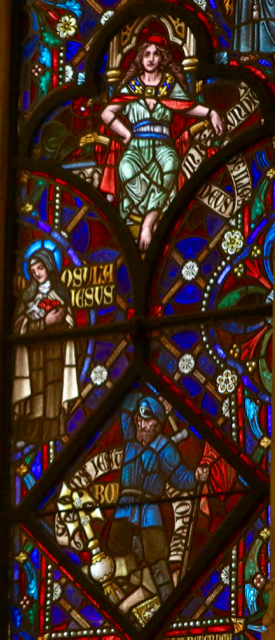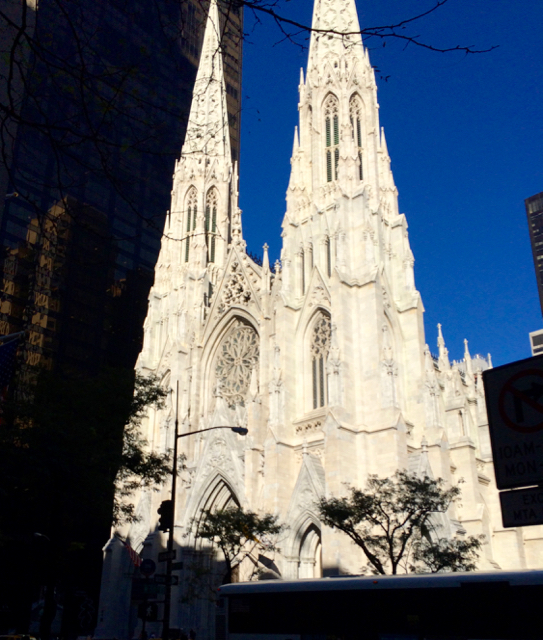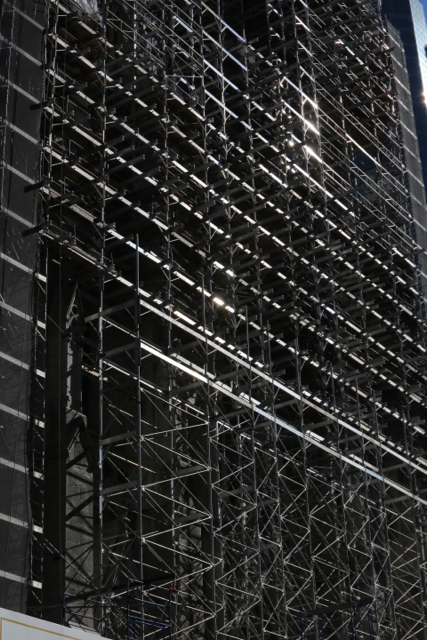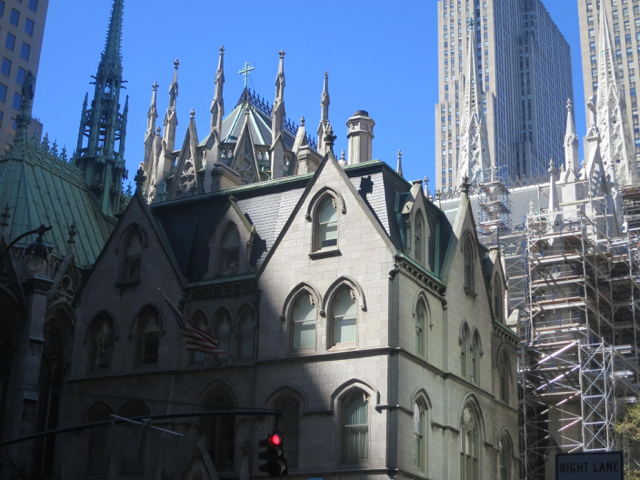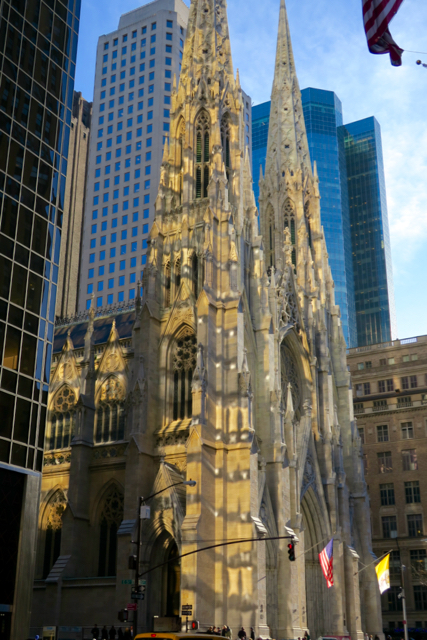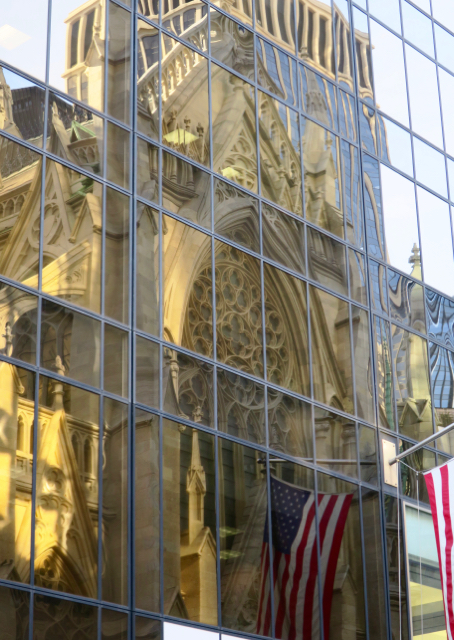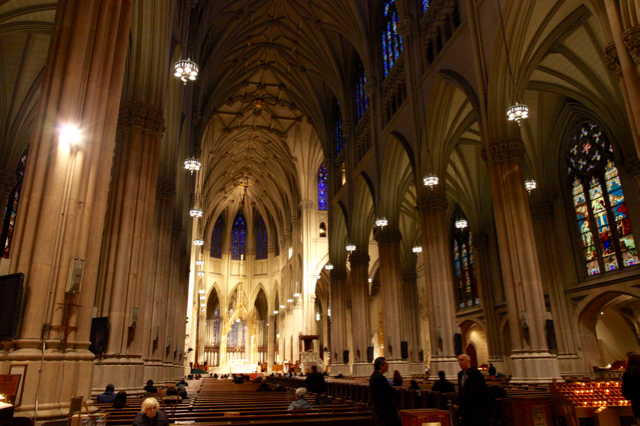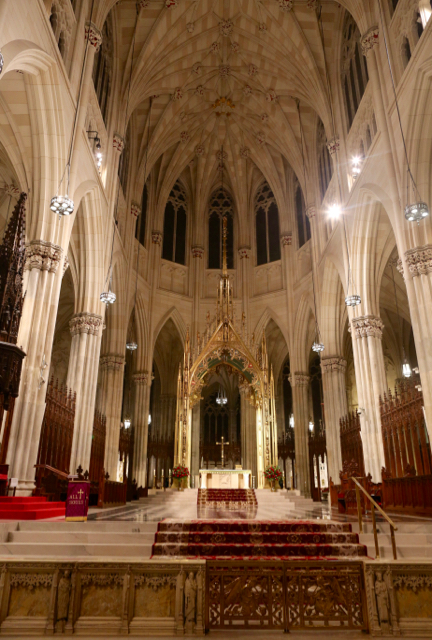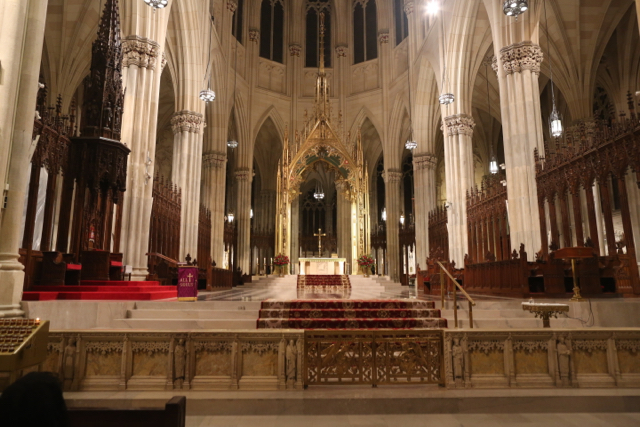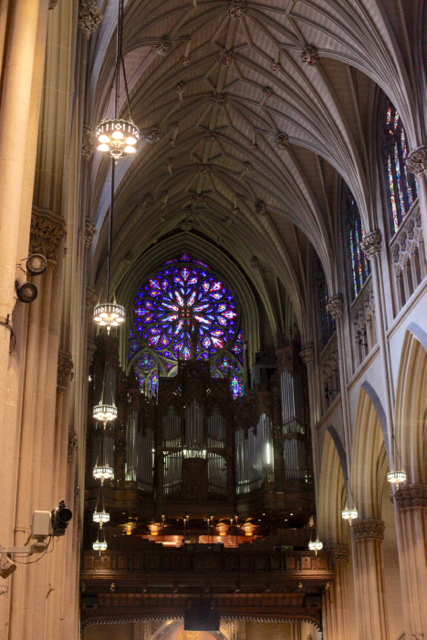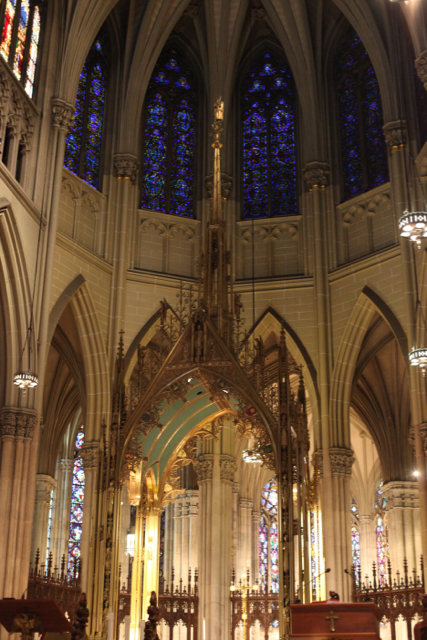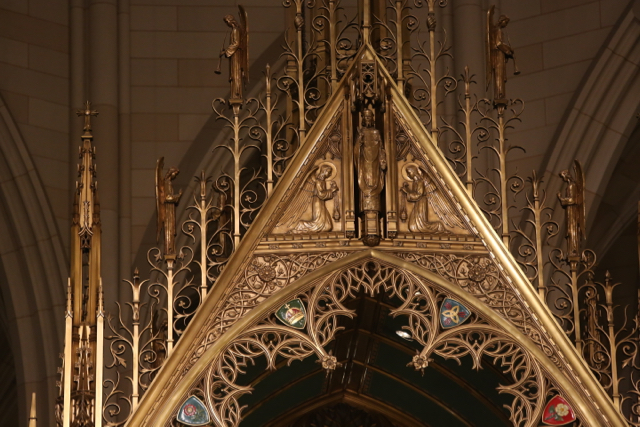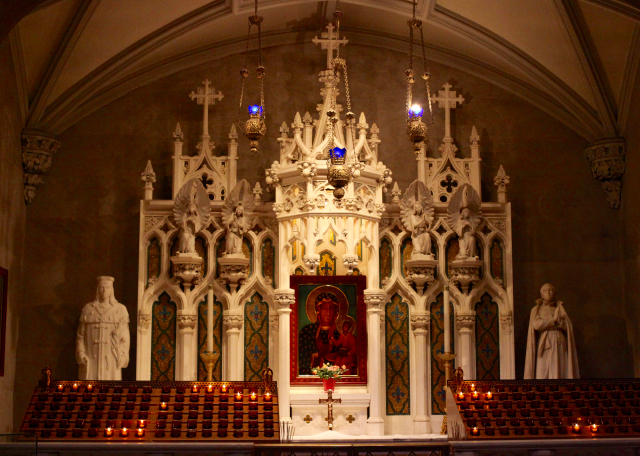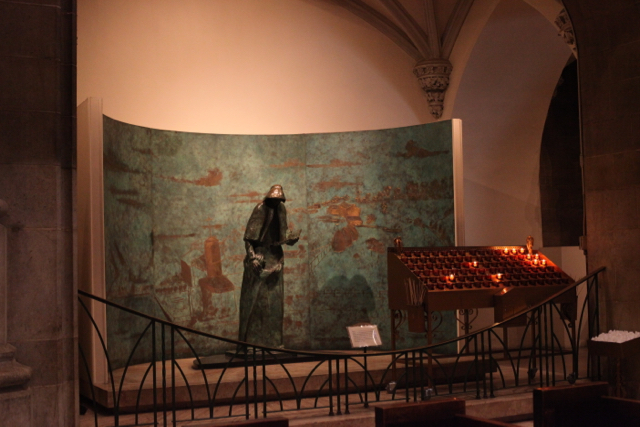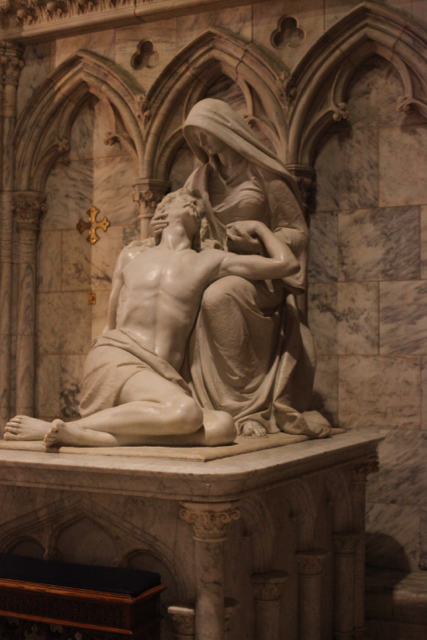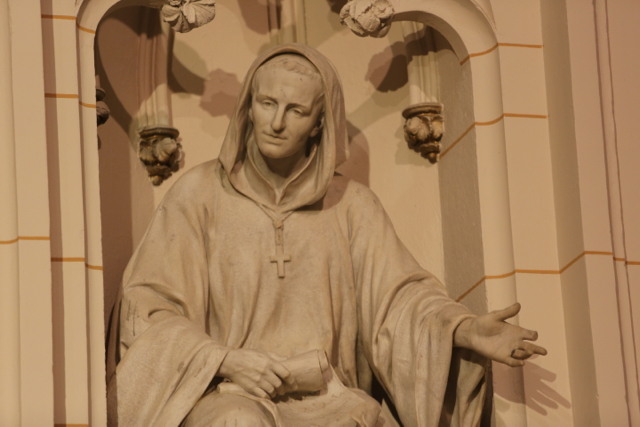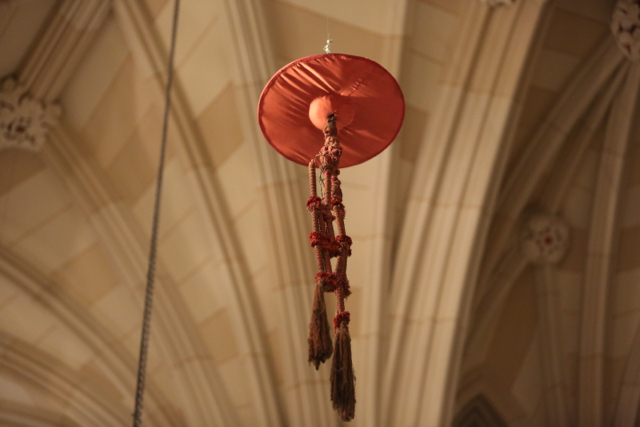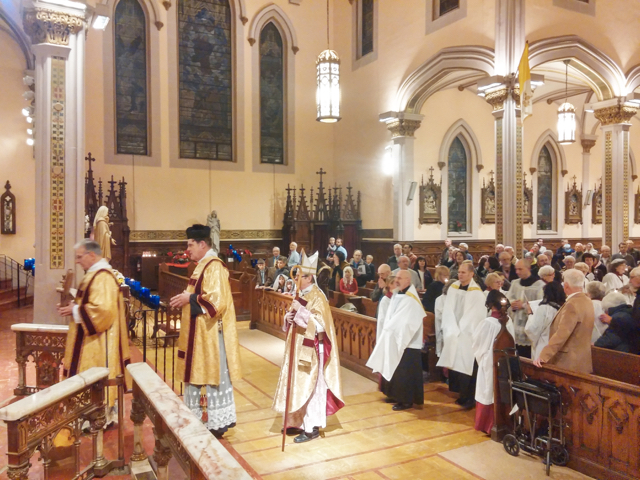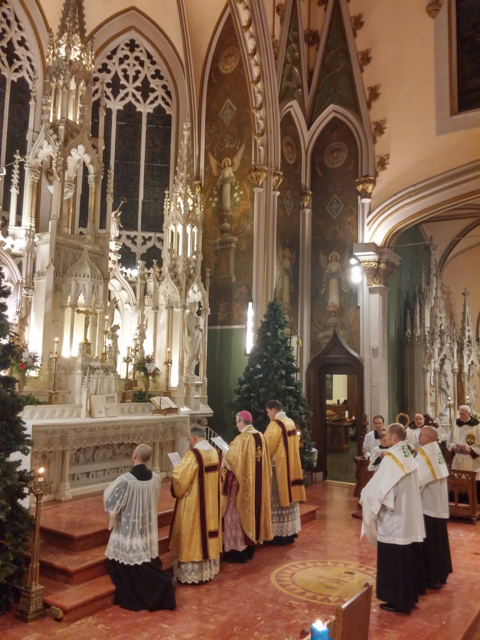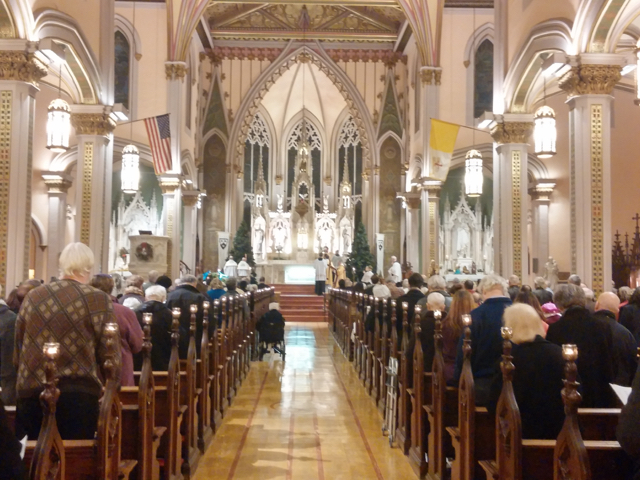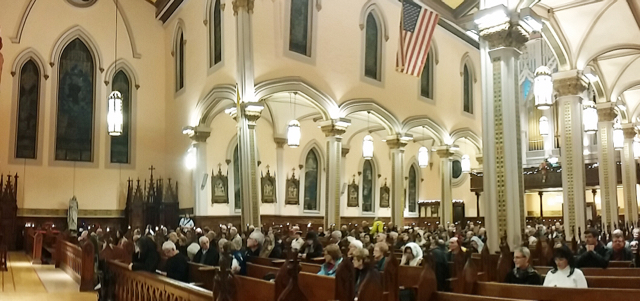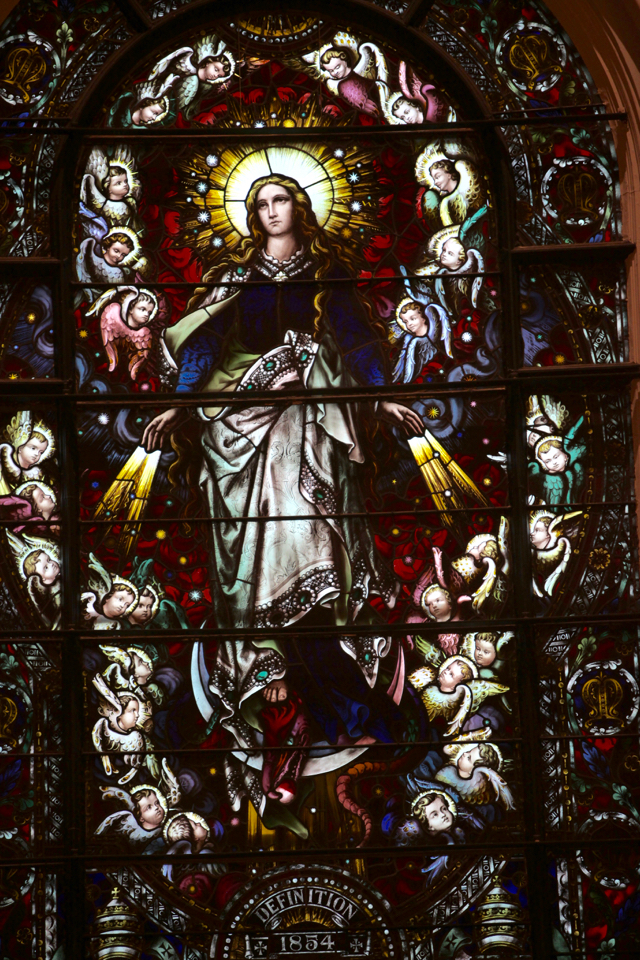15
Dec
14
Dec
Rorate Masses
Posted by Stuart ChessmanA number of churches in the area have revived the practice of Rorate Masses, a traditional Advent devotion wherein a Votive Mass to the Blessed Virgin Mary is offered in candlelight just before dawn.
The Church of the Holy Innocents in New York has had a number of Rorate Masses in Advent. The last is scheduled for this Thursday, December 15, at 6 am.
St. Mary Church, Norwalk, CT, Saturday, December 17 at 6 am.
St.. Mary Church, Greenwich, CT,Saturday, December 17 at 6:30 am.
Our photo was taken last year at the Rorate Mass at St. Mary Church, Greenwich.
14
Dec
Solemn Requiem Mass
Posted by Stuart ChessmanA Solemn Requiem Mass was celebrated yesterday for the soul of Paul G. Hughes at the Basilica of St. John the Evangelist in Stamford. The music included the Officium Defunctorum a 6 by Tomas Luis de Victoria.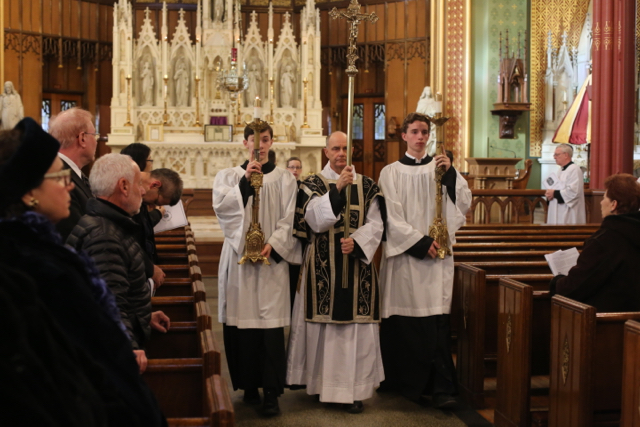
11
Dec
This year, St. Mary’s Church, Norwalk had the annual mass and procession for the Feast of Our Lady of Guadalupe on the vigil of the feast—this afternoon. Tonight there will be all-night adoration in the church and Mananitas tomorrow at 7:30 am.
11
Dec
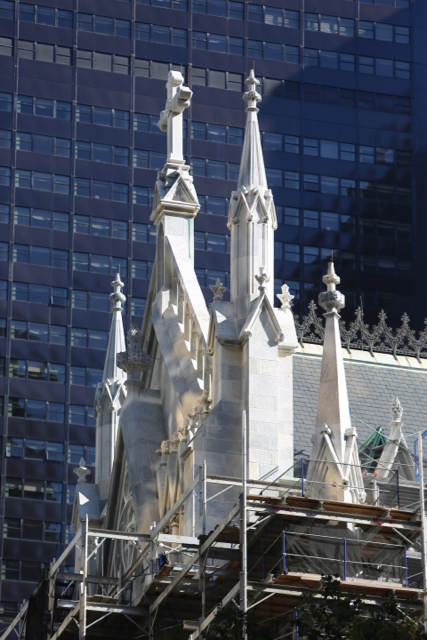
(Above) The cathedral (being renovated) against the background of one of the neighboring skyscrapers.
(Continued from part one)
If, prior to 1950, the never-ending process of embellishment and restoration had been a story of steady improvement, the post-Conciliar experience was anything but. Cardinal Cooke, for example, substituted statues of Mother Seton and Bishop John Neumann, in a grotesquely clashing style, for two of the Victorian-era side altars. Cardinal O’Connor went much further. He made significant changes, all under the rubric of “bringing the liturgy closer to the people” and making it “more visible.” A totally unnecessary “people’s altar” was inserted before the high altar, throwing the entire focus of the cathedral out of kilter. Bright lighting was installed, only demonstrating how little the Cardinal and his clergy knew about Gothic architecture. Finally, television screens were deployed around the nave. At some point in these years the two large altars in the transept were “repurposed” as a baptistery and shrine to Our Lady of Guadalupe. But despite all these painful mistakes, we can be grateful that, as a whole, St. Patrick’s was spared the post–Conciliar gutting inflicted on so many of its sister churches.
Cardinal O’Connor’s two successors retreated from some but not all of these mistakes. Among other repairs, Cardinal Egan substituted for the short-lived statue of John Neumann a new, more stylistically appropriate altar of Our Lady of Czestochowa. But the elements of this new altar had been seized from the magnificent church of St Thomas in Harlem, which the Cardinal had destroyed. We see here an unfortunate precedent: improvements to the cathedral begin to rely on the destruction of other Catholic churches.
We now come to the current restoration effort. Although the Cathedral has benefitted from more ongoing work than any other Catholic church in New York, Cardinal Dolan nevertheless felt inspired to commission a $171 million restoration. We have heard that the effort has left the Archdiocese very indebted indeed; we fear that the indebtedness will be financed out of the sale of other New York churches and their real estate.
What of the new restoration, now completed? Let me comment on the aesthetic impression, as opposed to the structural benefits. On the outside, the shining white church looks fine; one can now distinguish the different courses of stone. The results in the interior are more debatable. The bright, cleaned surfaces of the walls and ceiling, combined with the continued use of dazzling lighting, create a non-Gothic environment in which the stained glass, instead of illuminating the interior, recedes into the background.
And what of the life of the cathedral today? My knowledge of St. Patrick’s liturgical life in recent years admittedly has been restricted to the weekday afternoon services. The music, the preaching, the vestments and the ceremonial are dreadful; what kind of impression does this give to outsiders of the Catholic Church? For at all times a vast crowd of tourists circulates, vastly outnumbering the worshippers. A shop has been set up near the entrance for the convenience of all these guests. Innumerable stands for votive candles are placed around the church; they do remain popular. The candles thankfully are real, but for a number of years now their price has been doubled and their size cut in half. One thinks of J.K. Huysmans’s remarks about certain faithful “cheating God” with their (artificial) candles at Lourdes. What about the half-size ones here?
Fortunately the Eucharist is not the only sacrament celebrated at St Patrick’s; the sacrament of penance is one of the best options in town. But just be sure you arrive at the start of confession time – you will likely face a wait of a half hour or more!
So St. Patrick’s remains today more or less intact as a work of architecture. In contrast to almost every other Catholic church in Manhattan – except, perhaps, one or two commuter churches – it maintains a strong presence in the popular mind. In this age, these are real accomplishments. And in November 2016 even the Latin Mass returned to St Patrick’s for the first time since 1997. Does that herald a rebirth of liturgical and musical excellence? Will St. Patrick’s Cathedral no longer just seek out celebrity but aspire to the exercise of real spiritual leadership?
The side altars of the cathedral, (Above) The altar of the Holy Face (1891) which so impressed me as a child; (Below) An example of the famous “white marble” statuary beloved by the New York Irish.
(Above) This altar (erected after 1908) is a creation of Tiffany studios; (below) it was donated by the Bouvier family. Their descendant: Jackie O!
The stained glass of St Patrick’s has been created by artists not usually represented in New York Catholic churches and often depicts images that are unusual – even startling. The earliest (1879) glass came mainly from the Lorin studio in Chartres; of New York Catholic churches only St Jean Baptiste has a large set from this source. (Above) St. Henry Emperor of Germany warring against the “Slavonians” with saintly assistance. Cardinal Farley’s opinion in 1908: “It would do honor to the Louvre!”
(Above) The approval in 1725 of the constitution of the Christian Brothers (whose founder also has an altar in the cathedral).
(Above) A “dissolute monk” takes a shot at St Charles Borromeo, who is miraculously saved. (Below) St Charles Borromeo leads a procession among the plague victims of Milan – another favorite of Cardinal Farley. Windows donated by Lorenzo Delmonico – at that time the proprietor of the most famous restaurant in New York.
(Above) St Lawrence. (Below) Part of a window donated by James Renwick (who was not Catholic). The architect presents the plans of the cathedral to Archbishop Hughes. Disregarding normal notions of time, Cardinal McCloskey ( who built most of the cathedral) stands at his side, his hand on a diagram of that part of the cathedral’s plan which he altered . “James Renwick, Esq, New York” can be read on the portfolio propped against the desk. Lorin, the artist who created most of the original stained glass, can also be seen.
(Above and below) St Patrick’s features not one but two maiden saints being menaced – and then saved by divine intervention:(Above) St Susanna: (Below) St Agnes.
(Above) St Alphonsus Ligouri gives speech to a dumb man with a statue of the Madonna.
The installation of the much more sophisticated windows in the Lady Chapel by the noted English artist Paul Vincent Woodroffe lasted until 1932. (Above) A Bolshevik topples a cross.
Above him, the “goddess of liberty” of the French revolution sitting on the altar of Notre Dame cathedral
Sources:
(Anonymous) St. Patrick’s Cathedral, New York (West Chester, The New York Catholic Protectory Print (sic) 1879)
Farley, (Archbishop)John M., History of St. Patrick’s Cathedral (Society for the Propagation of the Faith, New York, 1908)
Carthy, Margaret, A Cathedral of Suitable Magnificence:St Patrick’s Cathedral New York (Michael Glazier Inc., Wilmington, 1984)(good on many of the parish activities of the Cathedral)
Basile, Salvatore, Fifth Avenue Famous: the Extraordinary Story of Music at St . Patrick’s Cathedral (Fordham University Press, New York 2010)
11
Dec
(Above) The dazzling cleaned and restored facade of St Patrick’s.
St. Patrick’s Cathedral
Fifth Avenue.
Good Old Saint Pat’s!
What more can the chronicler of Manhattan Catholic churches possibly say about this most visited church in the United States? What can the photographer add to the each day’s new stock of pictures taken by the hordes of tourists, usually futilely firing their flash? For nearly everyone in the world has been to St. Patrick’s by now, or so it seems. We will only attempt to add a few comments to a well-known story.
My own memories go back to Cardinal Spellman’s era – to what now seems like a distant age. Thinking back to what I saw, I wonder at times if my memory is playing tricks now and then. Wasn’t there a life-size seated wax image of a pope in the vestibule of the cathedral – was it Pius XII? And nearby wasn’t there an American flag in a glass case – was it from the USS Arizona? For so many years, two favorite aunts of mine did duty behind the welcome desk at the entrance. After their death the cathedral hardly seemed the same to me. The welcome desk, too, seems empty most of the time nowadays. For in more recent years, the first welcome given the visitor is a search of any packages or bags being brought into the Cathedral. After an elderly usher was murdered in 1988, the visitor now is greeted by dark-suited professional ushers/guards. It seems that St. Patrick’s has moved high up on the potential hit list of terrorists.
Saint Patrick’s was begun under Archbishop Hughes in 1859. The Civil War interrupted the work, which was only finished in 1879. The spires came even later in 1888. But when the work was done, the Catholics of New York, who had started out from a single church in downtown New York, now had the most magnificent church building in the United States. To those like the historian John Gilmarty Shea, who had experienced the end of those beginning years , the transformation of Catholic fortunes seemed almost miraculous. And by the time it was finished, the cathedral also found itself on the poshest residential street of New York City!
These developments, of course, didn’t sit well with a certain segment of the Protestant New York; both the first 1879 guide to the cathedral and Cardinal Farley’s 1908 book on the history of the Cathedral felt compelled to devote extensive space to rebutting rumors (“believed by nine-tenths of the Protestant population”) that the land on which St. Patrick’s is located had been given to the Catholic Church by the City of New York for little or no consideration. A more effective Protestant response to St Patrick’s was the building of the Cathedral of St. John the Divine. Now some aspects of that structure are even finer than St. Patrick’s; however, St. John’s was never finished. Moreover, for all its grand dimensions, Catholic architecture and array of national chapels, St. John’s remained the church of a limited, restrictive denomination. And its location was and is out of the way and for some decades was downright dangerous as well. Whereas even if the vicinity of Saint Patrick’s has changed over time from residential to commercial, the neighborhood has always remained upscale and the very center of town.
Strangely, James Renwick’s St. Patrick’s Cathedral didn’t enjoy a good press among architectural critics until fairly recent times. Undoubtedly that it was Roman Catholic contributed to that assessment. For who seriously can deny the cathedral makes a handsome appearance on Fifth Avenue? Its intricate spires, pinnacles and tracery contrast effectively with the block-like rectangular forms of the high-rise giants that surround it. St. Patrick’s more than holds its own against these towers; indeed the facade of Rockefeller Center directly facing the Cathedral has been cleverly designed to subtly interact with the façade of St. Patrick’s.
And the interior of St. Patrick’s is even better: spacious, well balanced and harmonious. It has a kind of serene “classical” harmony that contrasts with the drastic, overpowering and startling perspectives of the buildings and plazas of the Center across the street. The deep blue clerestory windows of Charles Connick and the golden baldachin set exactly the right accents. The innumerable visitors each day seem to agree: all in all this is one of the most successful buildings in New York history!
The completion of the cathedral, however, was only the start of the story. For unlike many other New York Catholic churches, the work at St. Patrick’s has never ceased. It seems as if every Archbishop of New York wanted to add his own touches. The side altars, the Stations of the Cross, and many statues were added from the 1880’s through the early 1900’s. In 1901 the beautiful Lady Chapel, a high point of New York ecclesiastical architecture, was commenced; its decoration, especially the splendid windows of Paul Woodroffe, lasted until 1932. Cardinal Hayes added the grand organ in 1930 as part of a conscious and successful initiative to enhance the cathedral’s musical presence in the city.
Finally, Cardinal Spellman carried out a major redecoration and restoration program in the 1940’s. A new, more “liturgically correct” altar and a baldachin were installed in the sanctuary (part of the 1879 altar can be seen today in Fordham University chapel.) Massive bronze doors were provided for the facade. The Lady Chapel’s altar was redone. Most significantly, Charles Connick designed a series of magnificent clerestory stained glass windows and the facade rose window as well. St. Patrick’s had now matched some of the fine decorative details of its recent rival for the title of premiere Catholic church in New York City, St. Vincent Ferrer. This restoration was by far the most successful work of art and architecture Spellman completed during his long tenure.
We will pass over the long series of state visits, funerals and other events that took place here. We also will not review the lengthy story of the parish activity of the Cathedral. For St. Patrick’s was and is also a territorial parish with its own history of schools and other institutions.
(Above and below ) The cathedral under restoration. In the background, Rockefeller Center.
(Above) The cathedral bathed in light reflected from the neighboring Olympic Tower; (below) In turn, the cathedral’s image reflected in the tower’s glass wall.
(Above) The (unrestored) interior: (Below) the restored sanctuary.
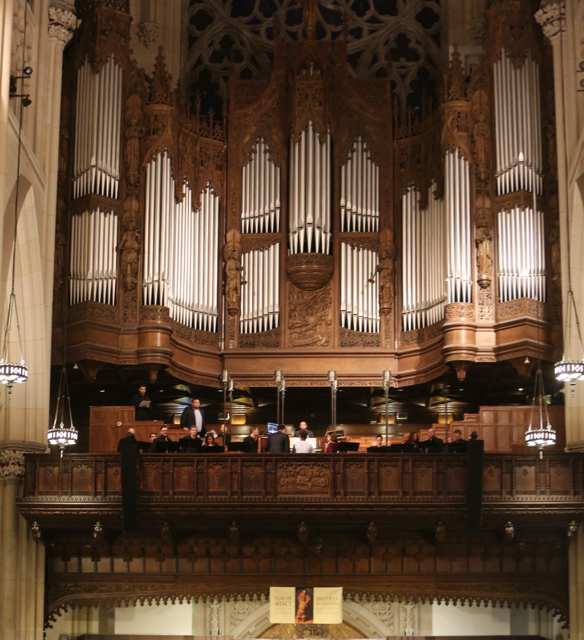
(Above) The gallery organ of 1930; a key component of a deliberate strategy to enhance the cathedral’s music presence in New York. The new (1927) music director, Pietro Yon (the composer of “Gesu Bambino”) led the initiative.
(Above and below) The best aspects of Spellman’s renovations: the baldachin and the windows of Charles Connick (clerestory and rose).
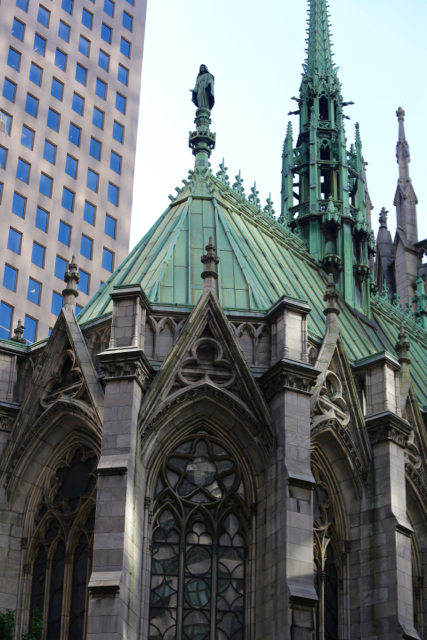
(Above) The exterior of the Lady Chapel. The statue is an addition of Cardinal Cooke.
Post-1965 Restorations. (Above) An altar, taken from St. Thomas in Harlem, replacing a modernist statue of St John Neumann installed under Cardinal Cooke; ((below) the equally inappropriate statue of Elizabeth Seton still stands.
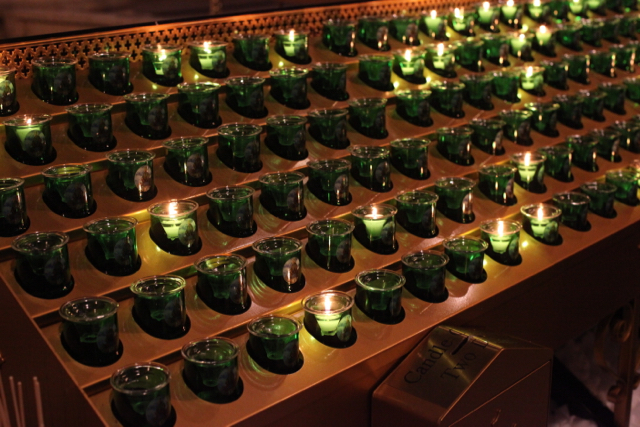
(Above) Votive candles – half size but twice the price!
(Above ) The mainly 19th century statuary in St. Patrick’s – almost all in the interior – earned great acclaim in its day. (Below) St Bernard – part of a unique series of the Doctors of the Church.
(Above) The Cardinals’ galeri hang once again from the ceiling – now in a side aisle of the ambulatory.
End of part one. See part two.
On Thursday, December 8, 2016, Bishop Edward Scharfenberger of the Diocese of Albany celebrated Mass in the Extraordinary Form at St. Joseph’s Church, Troy, New York. Fr. Jeffrey L’Arche assisted as deacon; Mr. Peter Ranalli as subdeacon.
(We know Fr. L’Arche well from years ago in Hartford CT, when he regularly celebrated the Traditional Mass there. And Bishop Scharfenberger already has engineered a remarkable recovery at the Auriesville, NY, shrine of the North American Martyrs.)
Thanks to the-latinmass.com
This Thursday, December 8th is the Feast of the Immaculate Conception, a holy day of obligation.
The following churches will offer the traditional mass:
Connecticut
St. Mary Church, Norwalk, CT, Solemn Mass, 5:30 pm
St. Stanislaus Church, New Haven, CT, 5:30 pm
Holy Apostles College, Cromwell, CT, 11 am
New York
Holy Innocents Church, New York, 8 am and 6 pm
Our Lady of Mount Carmel Pontifical Shrine, 448 E. 116th Street, New York, Solemn Mass, 7 pm
Immaculate Conception Church, Sleepy Hollow, NY, Low Mass, 7 pm
St Patrick’s, Newburgh NY, Low Mass at 3 PM
St. Joseph Church, Troy, NY, 6 pm, with Bishop Edward Scharfenberger, Bishop of Albany
New Jersey
St. Anthony of Padua Church, Jersey City, 5:30 pm
Our Lady of Victories, Harrington Park, NJ, Low Mass, 6PM
The stained glass window is in the Cathedral Basilica of St. James in Brooklyn.
30
Nov
For the first time, St. Mary’s in Norwalk will offer a Rorate Mass before dawn on Saturday December 17 at 6:00 a.m. This is one of the wonderful traditions of the Church during Advent. The Rorate Mass is a special Mass during Advent in honor of the Blessed Virgin Mary. This Mass is always celebrated by candlelight only and ends when the sun is just rising. The name of the Mass comes from the Introit of the Mass and the Versicle and Response every day at Vespers in Advent.
V. Rorate coeli desuper et nubes pluant justum.
(Drop down dew, ye heavens, from above, and let the clouds rain the just)
R. Aperiatur terra et germinet salvatorem.
(Let the earth be opened and send forth a Saviour)
Rorate Masses are also scheduled for Holy Innocents Church in New York and St. Mary’s in Greenwich, CT. See our post.
Contact us
Register
- Registration is easy: send an e-mail to contact@sthughofcluny.org.
In addition to your e-mail address, you
may include your mailing addresss
and telephone number. We will add you
to the Society's contact list.
Search
Categories
- 2011 Conference on Summorum Pontifcum (5)
- Book Reviews (95)
- Catholic Traditionalism in the United States (24)
- Chartres pIlgrimage (17)
- Essays (176)
- Events (670)
- Film Review (7)
- Making all Things New (44)
- Martin Mosebach (34)
- Masses (1,343)
- Mr. Screwtape (46)
- Obituaries (15)
- On the Trail of the Holy Roman Empire (22)
- Photos (347)
- Pilgrimage Summorum Pontificum 2021 (7)
- Pilgrimage Summorum Pontificum 2022 (6)
- Pilgrimage Summorum Pontificum 2023 (4)
- Sermons (79)
- St. Mary's Holy Week 2019 (10)
- St. Mary's Holy Week 2022 (7)
- St. Mary's Holy Week 2023 (7)
- St. Mary's Holy Week 2024 (6)
- Summorum Pontificum Pilgrimage 2024 (2)
- Summorum Pontificum Pilgrimage 2025 (2)
- The Churches of New York (198)
- Traditionis Custodes (49)
- Uncategorized (1,369)
- Website Highlights (15)
Churches of New York
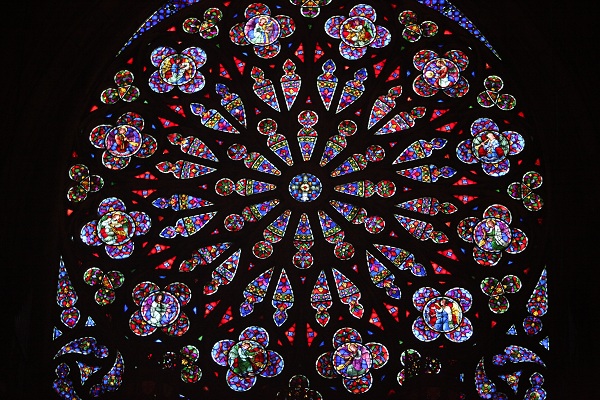
Holy Roman Empire
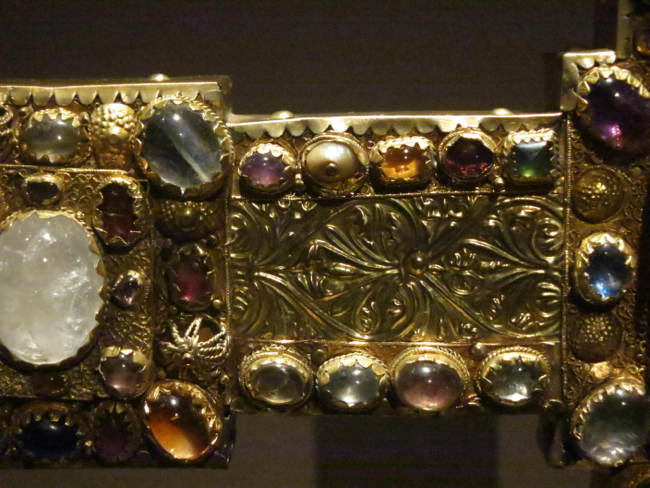
Website Highlights
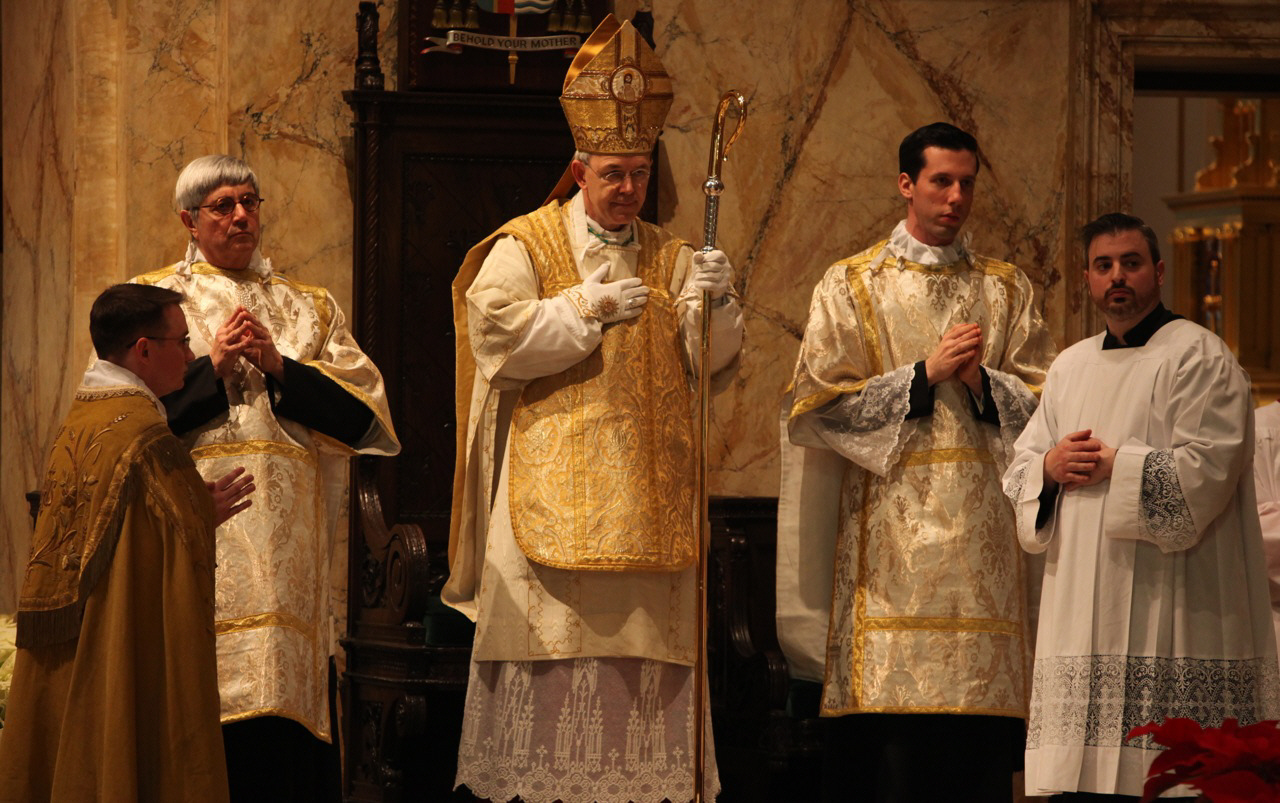
Archives
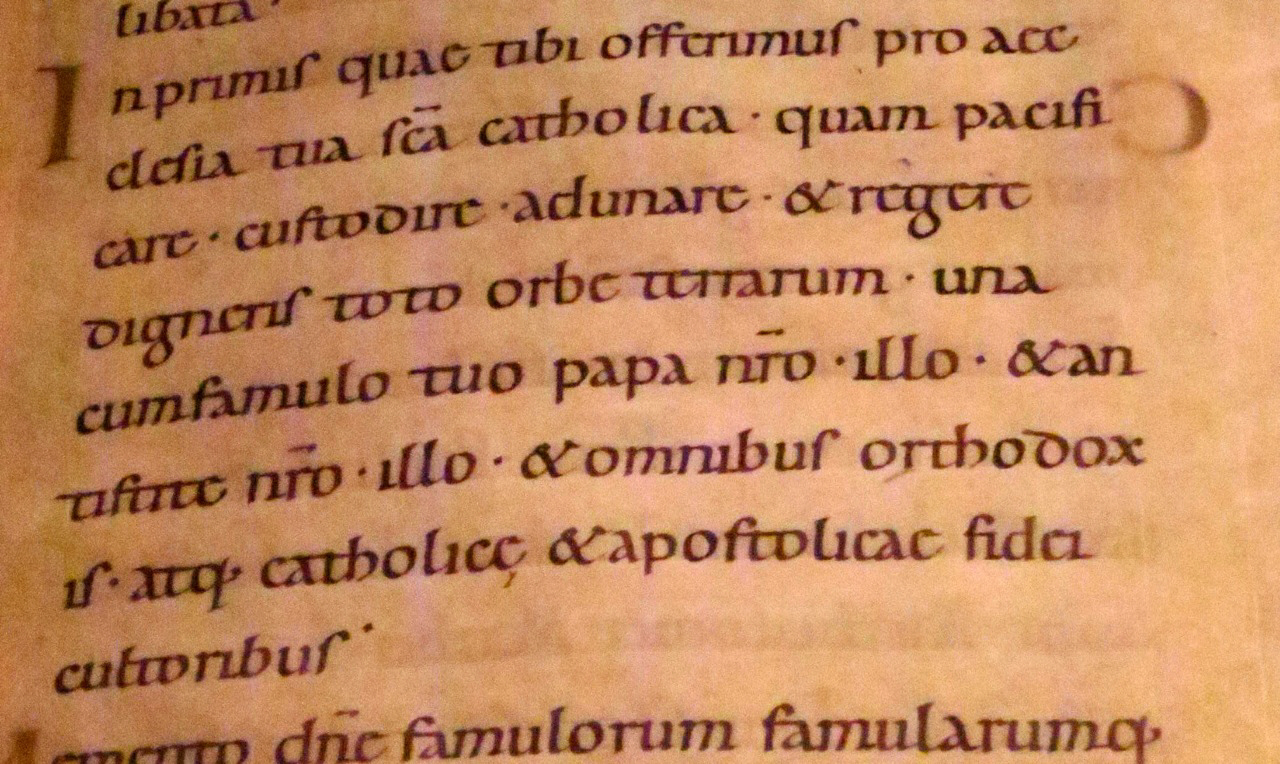
[powr-hit-counter label="2775648"]
